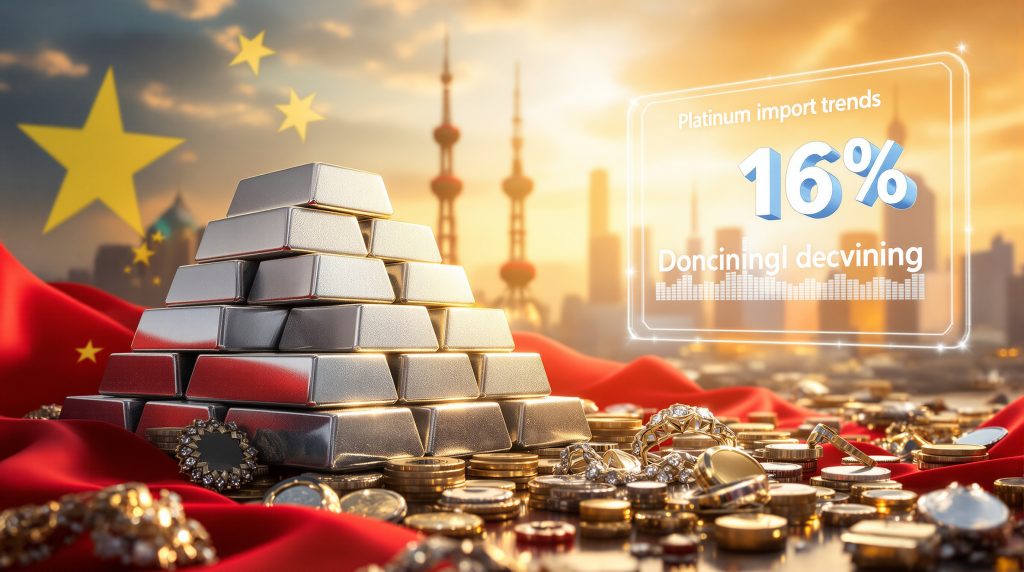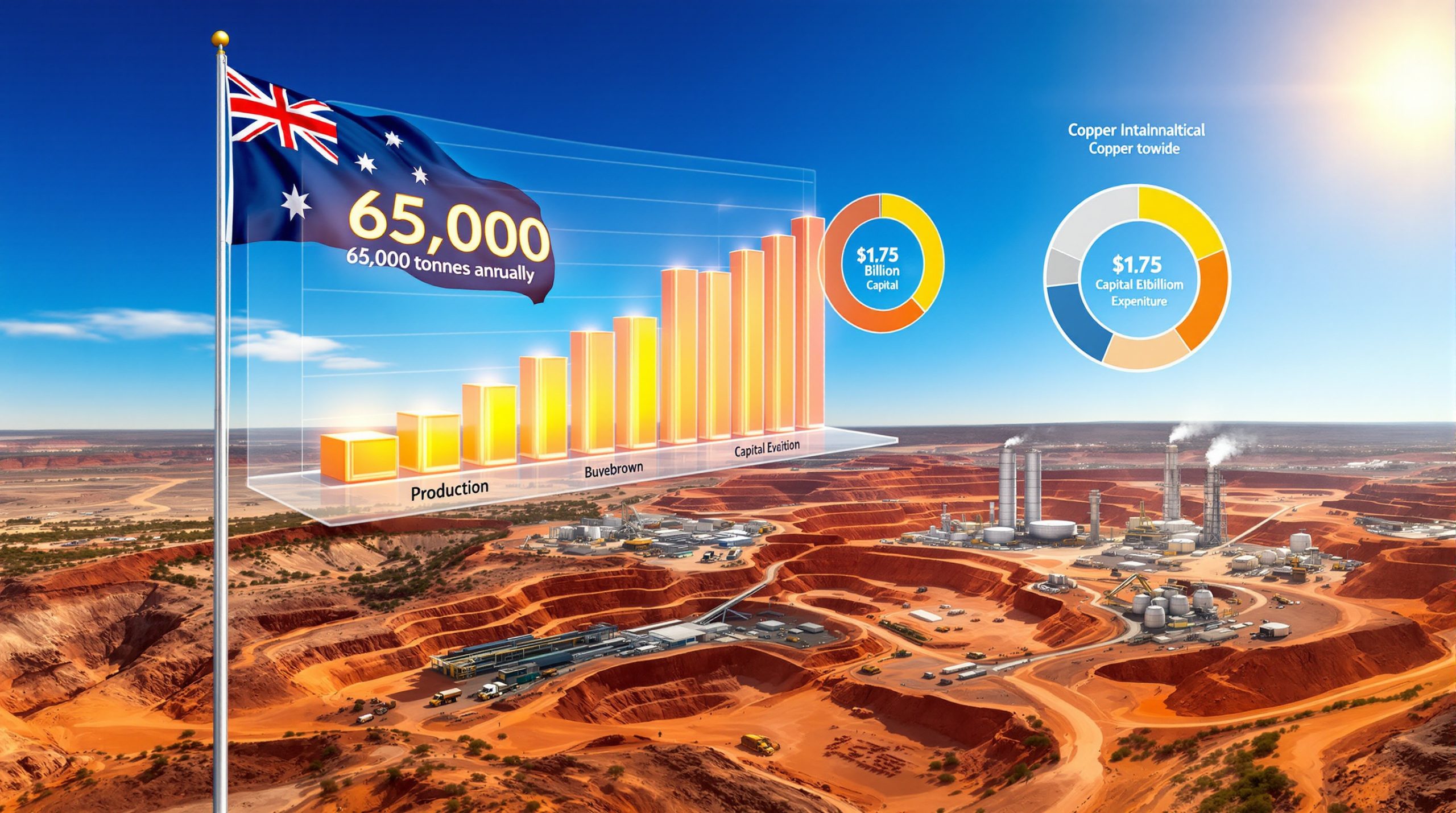How Have Chinese Platinum Imports Changed in Recent Years?
Chinese platinum import volumes have undergone significant shifts in recent years, reflecting complex market dynamics and evolving strategic priorities. Understanding these patterns requires looking beyond short-term fluctuations to identify meaningful trends.
Current Import Trends
Year-to-date platinum imports into China through August 2025 total approximately 2 million ounces, representing a 16% decrease compared to the same period in 2024. This decline challenges narratives of explosive growth in Chinese platinum imports that have circulated in market commentaries.
Monthly import volumes show considerable volatility throughout 2025, with notable peaks in April and May following an unusually depressed period from October 2024 through February 2025. This pattern of recovery from extremely low levels has created misleading impressions of unprecedented growth when viewed in isolation.
According to market analysis from the World Platinum Investment Council (WPIC), the April-May 2025 import figures align more closely with normal seasonal patterns seen in previous years rather than representing a fundamental shift in demand dynamics.
Historical Context of Import Fluctuations
The significant drop in import volumes from October 2024 through February 2025 created an artificially low baseline against which subsequent increases appeared dramatically higher. This statistical effect misled some market participants into perceiving a demand surge where a more nuanced recovery was occurring.
Chinese platinum import statistics, derived from Chinese customs data and tracked by organizations like the WPIC, require careful interpretation. The distinction between gross imports and net imports is particularly important, as is understanding the various channels through which platinum enters China.
When examined against longer-term historical averages, current import levels represent something closer to a return to normal rather than exceptional growth. This context is crucial for market participants attempting to forecast future demand trajectories.
What's Driving Chinese Platinum Demand?
Chinese platinum demand stems from multiple interconnected sectors, each responding to different economic, market, and strategic forces. Understanding these drivers provides essential context for interpreting import statistics.
Jewelry Market Dynamics
Chinese consumers have shown renewed interest in platinum jewelry as gold price highs analysis indicate prices reaching historic highs of approximately $3,800 per ounce as of September 2025. This price differential creates opportunities for platinum to regain market share in the luxury jewelry segment, where it competes directly with gold.
However, industry sources indicate that much of the recent increase in platinum imports for jewelry applications represents inventory building by manufacturers rather than confirmed shifts in end-consumer purchasing patterns. Major platinum jewelry manufacturers in China appear to be positioning themselves strategically in anticipation of potential consumer preference shifts rather than responding to already realized demand.
Jewelry fabrication centers like Shuibei in Shenzhen's Luohu District have reported increased production levels, with some facilities reaching capacity limits. As one of China's largest jewelry manufacturing hubs, Shuibei's production activity serves as an important indicator of industry sentiment regarding future jewelry demand.
Platinum's technical properties in jewelry manufacturing also influence demand patterns. Chinese platinum jewelry typically features higher purity standards (95% or 99% pure platinum) compared to gold jewelry (often 18k or 75% pure). This higher purity requirement means platinum jewelry uses more metal per gram of finished product than comparable gold pieces.
Strategic Stockpiling Activities
Evidence suggests China has been systematically building strategic platinum reserves over several years. While official data on these activities remains limited, market analysts estimate significant accumulation has occurred through various channels.
Import channels include state-owned entities that operate with value-added tax (VAT) exemptions, creating economic incentives that differ from those facing commercial importers. China's standard VAT rate for precious metals is 13%, meaning exempt importers gain a substantial cost advantage that facilitates accumulation.
This stockpiling activity aligns with broader national resource security objectives, particularly given China's limited domestic platinum production and platinum's strategic importance in emerging technologies. Similar patterns can be observed in China's approach to other critical metals and minerals deemed strategically important.
Industrial Applications and Future Demand
The automotive sector remains a significant source of platinum demand in China despite the ongoing transition to electric vehicles. Platinum's use in catalytic converters for internal combustion engines continues to drive baseline industrial demand, though this may evolve as fleet composition changes.
Growing interest in hydrogen fuel cell technologies creates potentially substantial new demand sources. Platinum serves as a critical catalyst in proton exchange membrane (PEM) fuel cells, and China's ambitious hydrogen development plans could significantly impact future platinum requirements.
Industrial applications in chemical manufacturing, glass production, and electronics industries support consistent baseline demand. Platinum's catalytic properties make it essential in numerous industrial processes, creating demand that tends to correlate with broader mining industry evolution and manufacturing activity levels.
How Does China Influence Global Platinum Market Dynamics?
As the world's largest platinum importer, China's market activities create ripple effects throughout the global supply chain and price formation process. This influence operates through multiple channels and mechanisms.
Market Share and Pricing Power
China represents a substantial portion of global platinum demand, giving it significant influence over market balances and price trends. When Chinese imports fluctuate, the available supply for other markets can be materially affected, creating potential volatility in physical metal availability.
Price sensitivity varies considerably across different Chinese demand segments. Jewelry manufacturing typically demonstrates higher price elasticity, while industrial applications and strategic stockpiling may continue regardless of short-term price movements, creating complex demand responses to market signals.
Market participants increasingly monitor Chinese import data as a leading indicator of price direction. The market reaction to preliminary Chinese import figures in May-June 2025 demonstrates how perceptions of Chinese demand can drive speculative positioning and price movements before comprehensive data becomes available.
Shanghai Platinum Week and Market Development
Record participation at Shanghai Platinum Week 2025 highlights China's growing prominence in global platinum market infrastructure. This annual industry gathering has evolved from a regional event to a globally significant conference that attracts participants from across the precious metals value chain.
Institutional and retail investor interest in platinum has increased domestically within China, supported by developing market infrastructure. The Shanghai Gold Exchange provides trading platforms for platinum alongside other precious metals, while financial institutions have expanded platinum-linked investment products available to Chinese investors.
Chinese market infrastructure continues to develop with new trading platforms, financial products, and information services focused on platinum group metals. This evolution creates greater market sophistication and potentially influences how platinum is priced globally.
Supply Chain Implications
Chinese stockpiling activities create uncertainty about actual consumption rates, complicating market analysis. The distinction between metal that enters end-use applications versus inventory accumulation becomes crucial for forecasting future import requirements.
Jewelry manufacturers' inventory building creates potential future supply overhang if consumer demand fails to materialize as anticipated. This inventory position could either support sustained lower imports in future periods or potentially re-enter the market if manufacturers liquidate positions.
Strategic reserves provide China with a buffer against supply disruptions but simultaneously obscure true consumption patterns. The opacity surrounding these reserves creates an additional layer of uncertainty for market participants attempting to model supply-demand balances.
What's the Current State of the Global Platinum Market?
The platinum market has experienced remarkable price appreciation in 2025, driven by a complex interplay of physical demand, investment flows, and supply constraints. Understanding the sustainability of these trends requires examining multiple market dimensions.
Price Performance and Market Sentiment
Platinum prices have risen approximately 50% from May to September 2025, moving from around $1,000 per ounce to approximately $1,500. This dramatic appreciation has brought prices to cyclical highs comparable to levels seen during the 2014 South African mining strike period.
The price increase has been primarily driven by investor demand and dealer inventory building rather than fundamental tightness in fabrication demand. This distinction raises questions about the sustainability of current price levels if investment flows moderate or reverse.
Market participants are actively debating whether the recent price movements represent a temporary phenomenon or signal a more fundamental shift in platinum's supply-demand dynamics. This uncertainty creates both opportunities and risks for market participants positioning for future price direction.
Supply-Demand Balance Assessment
Industry analysts identify ongoing supply constraints in South African production, which accounts for approximately 70-75% of global platinum mine supply. South Africa's platinum mining industry faces structural challenges including deep mine depths, electricity supply constraints, and periodic labor disruptions.
Recycling volumes remain constrained by lower automotive scrappage rates globally, limiting this important secondary supply source. Automotive catalytic converters represent the largest source of platinum recycling, making scrappage trends a key factor in overall market balances.
Industrial demand shows resilience despite economic uncertainties in key manufacturing sectors. Platinum's diverse industrial applications across automotive, chemical, glass, and electronics industries provide baseline demand that tends to moderate during economic slowdowns but rarely collapses entirely.
Investment Flows and Positioning
Speculative interest increased significantly following reports of Chinese import growth in late May and early June 2025. Market commentary and preliminary data suggesting unprecedented import increases catalyzed investment flows before more complete data provided context.
Short-term investors and speculators have contributed significantly to recent price movements, potentially creating vulnerability if sentiment shifts. The distinction between long-term structural investment and shorter-term speculative positioning becomes important for assessing price sustainability.
Dealer inventory building suggests expectations of continued strong demand, creating a potential buffer against immediate price corrections. Dealer positioning often reflects anticipation of future customer requirements rather than current order flow, making it an important leading indicator.
How Does Platinum Compare to Other Precious Metals?
Platinum's market behavior should be understood within the context of broader precious metals trends. The interrelationships between platinum, gold, silver, and palladium provide important insights into market dynamics.
Gold-Platinum Relationship
Gold prices reached record levels of approximately $3,800 per ounce in September 2025, creating an exceptional price premium over platinum. Historically, this relationship has fluctuated significantly, with platinum trading at a premium to gold during much of the 2000s.
The gold-platinum ratio currently stands at approximately 2.5:1, meaning one ounce of gold buys about two and a half ounces of platinum. This ratio remains historically wide despite platinum's recent price gains, suggesting potential relative value opportunities.
Different investor profiles and demand drivers create divergent price patterns between the metals. Gold's monetary role and gold safe-haven dynamics attract investment during periods of economic uncertainty, while platinum's primarily industrial and jewelry applications create more cyclical demand patterns.
Silver Market Parallels
Silver prices approached record monthly average levels in September 2025, demonstrating the broader strength in precious metals markets. On a monthly average basis, silver traded just 10 cents below its all-time record monthly average from April 2011.
Both silver and platinum benefit from investment spillover effects when gold prices rise, as investors seeking precious metals exposure often diversify across the complex. However, the magnitude and timing of these spillover effects can vary significantly based on market conditions.
Silver's industrial applications create some demand similarities with platinum, though in different end-use sectors. This industrial component makes both metals somewhat more economically sensitive than gold, though to varying degrees.
Palladium Market Interactions
Palladium prices have risen in sympathy with platinum despite different fundamental drivers, exceeding market expectations that prices would remain below $1,200. The interconnected nature of platinum group metals trading creates correlation during periods of strong investment interest.
Substitution potential between platinum and palladium in automotive applications creates price linkages, particularly as manufacturers consider metal switching based on relative economics. This substitution possibility creates a feedback mechanism between the markets that influences longer-term price relationships.
Regional demand patterns vary significantly between the metals, with China representing a larger share of global platinum demand than palladium demand. This creates different sensitivity to Chinese economic conditions and import patterns.
What Are the Economic Factors Influencing Precious Metals Markets?
Broader economic conditions provide essential context for understanding precious metals price movements, including platinum. Recent economic indicators paint a complex picture with implications for metal demand.
US Economic Indicators
US GDP grew by 3.8% in the second quarter of 2025, exceeding earlier estimates of 3.3%. However, this headline figure masks important underlying details that suggest more nuanced economic conditions.
The growth was significantly driven by a drop in imports rather than broad-based economic expansion. In the US national accounts methodology, declining imports mathematically contribute to GDP growth, potentially overstating the strength of domestic economic activity.
Business investment continues to contract, raising concerns about future growth prospects. This decline in capital formation could signal reduced confidence in future economic conditions and potentially impact industrial metal demand over time.
Consumer Spending and Income Trends
Personal consumption expenditures increased in August 2025 while disposable income remained flat, creating pressure on household finances. This pattern suggests consumers are maintaining spending levels despite income constraints.
Savings rates contracted as consumers drew down accumulated reserves to maintain consumption patterns. This unsustainable dynamic raises questions about the durability of consumer spending without corresponding income growth.
Consumer spending patterns showed recovery from weakness observed in April and May, but the quality and sustainability of this recovery remain uncertain. Continued monitoring of these trends will be essential for gauging potential precious metals demand from consumer-facing sectors like jewelry.
Inflation and Monetary Policy Outlook
PCE price inflation remains above the Federal Reserve's target, creating continued pressure for restrictive monetary policy. This persistent inflation challenges market expectations for rapid interest rate reductions.
Federal Open Market Committee members express caution about lowering interest rates too rapidly, with inflation concerns outweighing growth risks in recent communications. This cautious approach to monetary policy normalization affects the opportunity cost of holding non-yielding assets like precious metals.
Monetary policy decisions continue to influence investment flows into precious metals, with interest rate expectations playing a crucial role in determining relative attractiveness. Real interest rates (nominal rates minus inflation) particularly impact precious metals investment demand.
What's the Outlook for Chinese Platinum Imports?
Future trends in Chinese platinum imports will depend on multiple factors across different market segments. Projections require considering jewelry demand, strategic reserves, and industrial applications.
Jewelry Demand Projections
Chinese platinum jewelry demand is forecast to increase by 11% to approximately 2.23 million ounces in 2025, potentially representing the highest consumption levels since 2018. This would reverse a long-term decline that characterized much of the past decade.
This forecast depends heavily on maintaining platinum's price advantage relative to gold. If the current wide gold-platinum ratio persists, it creates continued incentives for manufacturers and retailers to promote platinum as a value alternative.
Manufacturer inventory levels will significantly affect future import requirements. The current inventory building by jewelry manufacturers could either support sustained end-consumer sales growth or create reduced import requirements if consumer demand fails to materialize.
Strategic Reserve Building
Government policies supporting resource security suggest continued strategic stockpiling activities, though the pace and volume remain uncertain. China's approach to critical minerals security has consistently emphasized ensuring adequate supplies of materials deemed strategically important.
Import channels through state-affiliated entities provide mechanisms for reserve building that operate separately from commercial market dynamics. These channels can continue accumulating metal even during periods of commercial demand weakness.
Geopolitical considerations may accelerate or moderate stockpiling activities depending on broader international relations and supply security assessments. Increased concerns about supply chain resilience could potentially accelerate reserve building programs.
Industrial Demand Evolution
The automotive sector transition creates both challenges and opportunities for platinum demand in China. While internal combustion engine production may gradually decline, platinum loading per vehicle could potentially increase due to tightening emissions standards.
Hydrogen economy development represents a significant potential growth driver, particularly as China accelerates deployment of fuel cell vehicles in commercial transportation applications. Government policies supporting hydrogen technologies could materially impact platinum demand trajectories.
Electronics and chemical industry applications provide baseline demand support that tends to correlate with broader manufacturing activity. These sectors represent relatively stable demand components less subject to dramatic policy-driven shifts.
FAQs About Chinese Platinum Imports
What factors most influence Chinese platinum import volumes?
Chinese platinum import volumes are primarily influenced by jewelry manufacturing demand, strategic stockpiling activities, industrial applications, and relative price advantages compared to other precious metals. Government policies supporting resource security and tax structures for certain importers also play significant roles in determining import patterns.
The jewelry sector historically represented the largest component of Chinese platinum demand, making manufacturer inventory decisions and consumer preferences particularly important. However, strategic stockpiling has emerged as an increasingly significant factor that operates independently of commercial market dynamics.
Price relationships between platinum and competing metals, particularly gold in jewelry applications and palladium in automotive catalysts, create substitution incentives that influence import requirements. These relative value considerations can drive significant shifts in metal preferences.
How reliable are Chinese platinum import statistics?
While official import statistics provide valuable insights, they have important limitations that affect their interpretation. The presence of state-affiliated importers with special tax status, varying inventory reporting practices, and limited transparency about end-use allocation create challenges.
Chinese customs data, which serves as the primary source for platinum import statistics, provides monthly granularity on gross import volumes but lacks detail on the purpose or destination of imported metal once it enters the country. This limits visibility into actual consumption patterns.
Market participants typically analyze these statistics alongside other indicators like Shanghai Gold Exchange delivery data, jewelry manufacturer surveys, and industrial production figures to develop a more comprehensive understanding of true demand dynamics.
Will Chinese platinum jewelry demand continue to grow?
Chinese platinum jewelry demand growth depends on several interconnected factors, including the price relationship with gold, consumer preferences, economic conditions, and manufacturer marketing strategies. The recent growth represents a reversal of a long-term decline, suggesting potential for continued recovery.
Platinum's price advantage relative to gold remains the most significant driver of renewed interest. As long as gold maintains its historic premium over platinum, manufacturers and retailers have strong incentives to promote platinum as a value alternative in the luxury jewelry segment.
Consumer preference trends evolve gradually, with younger Chinese consumers potentially viewing platinum differently than previous generations. Marketing initiatives by industry bodies like the Platinum Guild International aim to position platinum favorably within evolving consumer value systems.
How does Chinese stockpiling affect global platinum prices?
Chinese stockpiling activities influence global platinum prices by effectively removing metal from the available market supply, tightening the supply-demand balance. This reduction in freely available metal can support higher prices, particularly during periods of production disruption.
However, these reserves could potentially re-enter the market under certain conditions, creating uncertainty about long-term price impacts. Unlike commercial inventories that typically respond to price signals, strategic reserves operate according to national security considerations that may not align with commercial logic.
The opacity surrounding stockpile management adds to market complexity, as participants must estimate both the volume of metal already accumulated and the ongoing accumulation rate. This uncertainty can create both price volatility and valuation discrepancies.
Conclusion: Interpreting Chinese Platinum Import Trends
The narrative surrounding Chinese platinum imports requires careful analysis beyond headline figures. While recent months have shown increases from the unusually low levels seen in late 2024 and early 2025, year-to-date imports remain below previous years. The market has responded strongly to perceptions of increased Chinese demand, driving platinum prices to significant cyclical highs.
Understanding the composition of Chinese platinum demand across jewelry manufacturing, strategic stockpiling, and industrial applications provides essential context for interpreting import data. The interplay between these segments, alongside broader gold market trends and US-China trade war effects, will continue to shape both Chinese import patterns and global platinum prices.
For investors and market participants, distinguishing between cyclical fluctuations and secular trends remains crucial. The current market environment, characterized by record gold prices, economic uncertainties, and evolving industrial applications, creates both opportunities and challenges for platinum market stakeholders.
While short-term price movements have been dominated by investment flows responding to Chinese import narratives, longer-term fundamentals will ultimately determine platinum's price trajectory. These fundamentals include South African production capabilities, automotive industry transition pathways, jewelry demand sustainability, and strategic stockpile policies.
Market participants should remain attentive to evolving Chinese import patterns while recognizing the limitations of headline statistics. A holistic approach that considers multiple demand drivers, inventory positions throughout the supply chain, and broader precious metals market dynamics will provide the most reliable framework for anticipating future market developments.
Want to Stay Ahead of Major Mineral Discoveries?
Discover how significant mineral finds can lead to exceptional market returns by exploring Discovery Alert's dedicated discoveries page. Powered by the proprietary Discovery IQ model, this service delivers real-time alerts on significant ASX mineral discoveries, giving you an immediate edge in the market. Begin your 30-day free trial today at https://discoveryalert.com.au/discoveries/.




